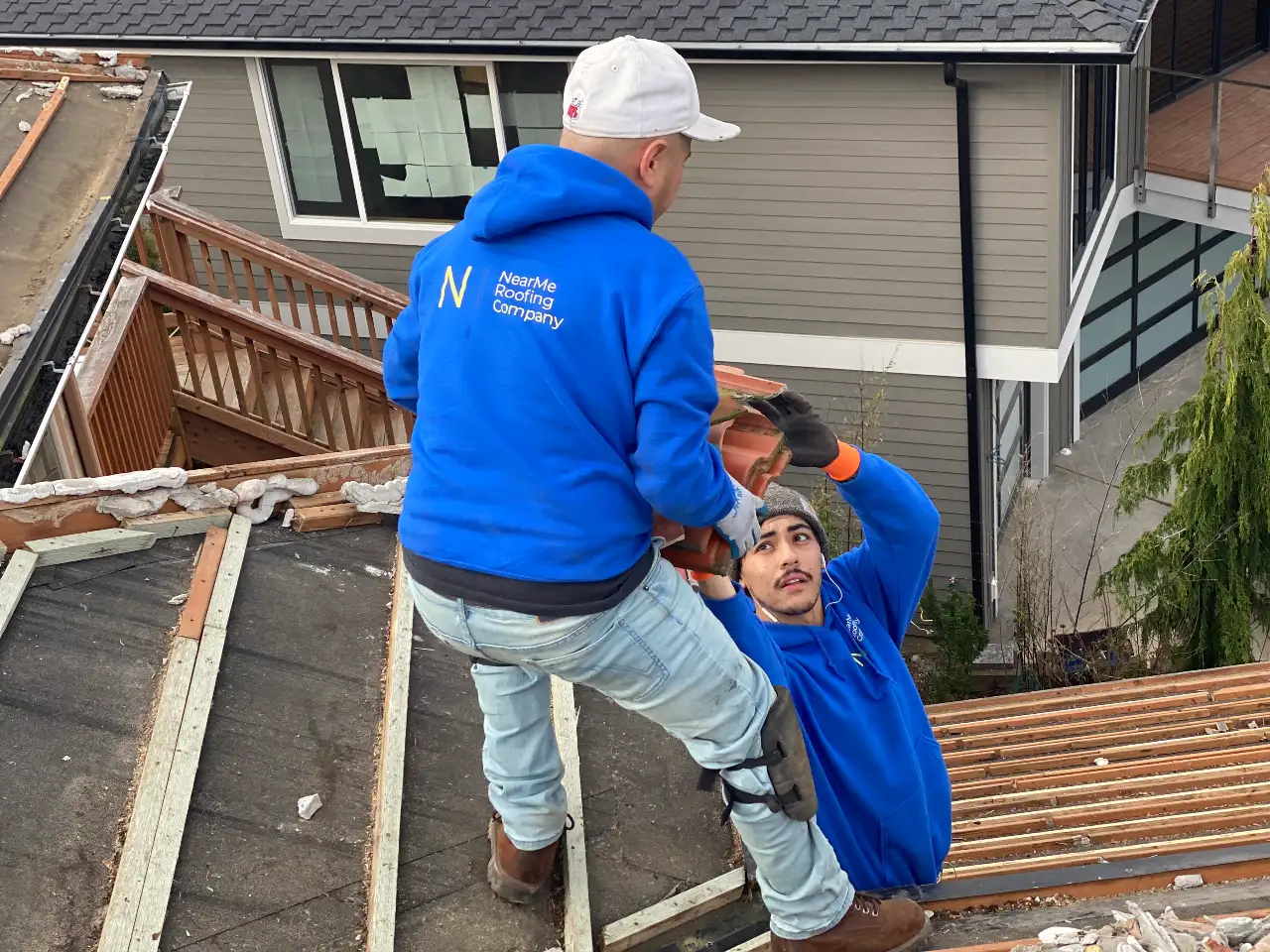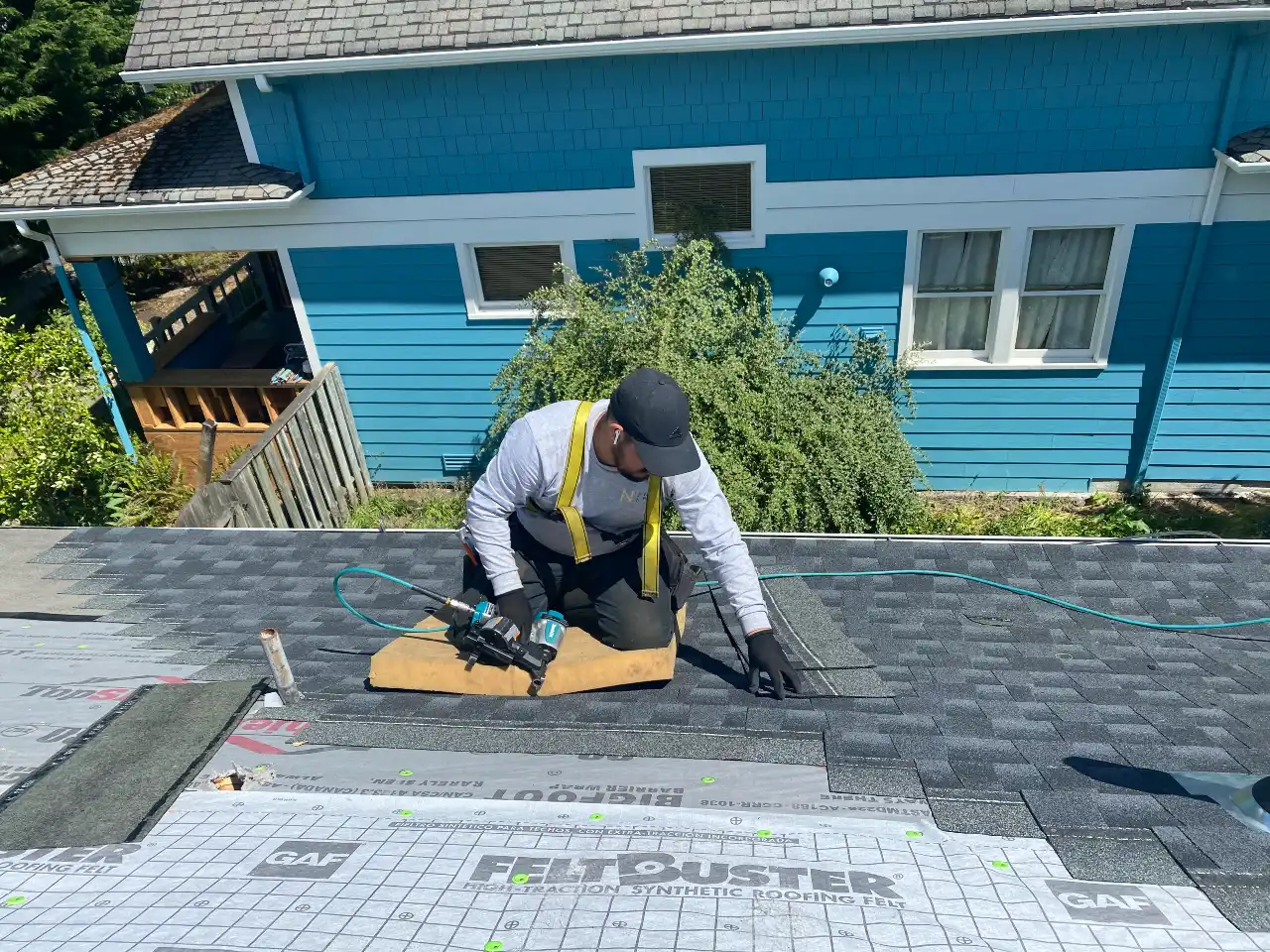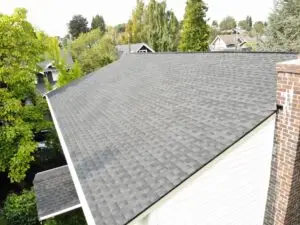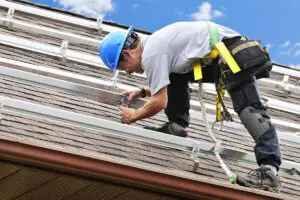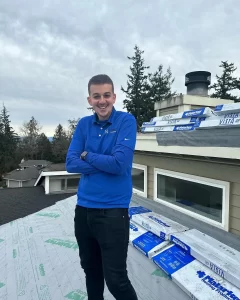Not only can it be an inconvenience, but the problem can get much worse very quickly. So most of the time, it’s urgent too. A leaky roof can turn into serious water damage if left unchecked.
Commonly, many homeowners try to tackle roof repairs themselves, but that can most times lead to even bigger problems down the line if the job isn’t done properly.
The Biggest Mistake: Failing to Properly Diagnose the Problem
The first and biggest mistake people make when repairing a leaky roof is failing to properly identify and address the root cause of the leak. It’s not enough to simply patch a hole or seal a crack – you need to figure out what’s causing the leak in the first place and make sure you fix that underlying issue. Otherwise, the leak is likely to just come back, and you’ll be back to square one.
So what are some of the most common causes of roof leaks? How can you make sure you’re addressing them effectively when doing a DIY roof repair? Let’s take a closer look.
Leaky Roof Repair: Diagnosing The Problem
Worn Shingles or Tiles
One of the most common factors behind a leaky roof is simply worn, damaged, or missing shingles or roof tiles.
Over time, the materials that make up your roof can become cracked, curled, or dislodged due to weather, age, or other factors. This leaves gaps and openings where water can seep through.
When repairing a leak caused by worn shingles or tiles, you can’t just slap a patch over the problem area and call it a day. You need to carefully inspect your entire roof and identify all the damaged or missing shingles/tiles.
Replace any that are cracked, curled, or missing entirely. You may also need to re-seal the edges of the remaining shingles to ensure a tight seal.
Flashing Issues
Another common source of roof leaks is problems with the flashing – the metal strips that are used to seal joints, edges, and transitions on a roof. Flashing can become damaged, corroded, or improperly installed over time, allowing water to penetrate.
If you want a leaky roof repair from damage caused by flashing problems, you’ll need to carefully inspect all the flashing on your roof. Replace any pieces that are heavily damaged or worn. You may also need to re-seal the flashing using a high-quality roofing sealant. Proper flashing installation is also important, so if you’re not 100% sure how to do it right, it’s best to call in a professional roofer.
Uhh! Ice Dams
In cold seasons, ice dams can also be a common cause of roof leaks. Ice dams form when snow on your roof melts and then refreezes at the edge of the roof. It could then end up creating a barrier that prevents water from draining properly. This can cause the water to back up under the shingles and leak into your home.
To prevent and and fix ice dam-related leaks requires a multi-pronged approach. You’ll need to ensure proper insulation and ventilation in your attic to minimize the temperature difference that leads to ice dam formation.
You may also need to manually remove built-up ice and snow from your roof. The strategic placement of heating cables can help melt ice dams before they cause leaks.
Underlying Structural Issues
In some cases, roof leaks can be the result of more serious underlying structural problems with your home. Things like sagging roof beams, inadequate roof pitch, or poor original construction can all create vulnerabilities that lead to leaks.
Identifying and addressing these kinds of structural issues requires the expertise of a professional roofer or contractor. Trying to patch over the symptoms without fixing the root cause will only lead to the problem recurring again and again. Be prepared to invest in more significant repairs if a structural problem is to blame for your leaky roof.
Neglected Maintenance
Perhaps the most common – and most avoidable – cause of roof leaks is simply neglected maintenance. Roofs require regular inspection and upkeep to maintain their integrity and prevent problems. Homeowners who don’t stay on top of roof maintenance are much more likely to develop leaks down the line.
To avoid this, make a habit of inspecting your roof at least once or twice a year, preferably in the spring and fall. Look for any damaged, loose, or missing shingles/tiles. Check the condition of the flashing. Clear away any built-up debris or vegetation. And address any small issues before they have a chance to turn into bigger problems.
Trying to fix a leak without understanding what’s causing it is like putting a bandaid on a gushing wound. The leak will just come back, and you’ll be stuck in an endless cycle of temporary fixes. That’s why it’s so important to take the time to carefully inspect your roof and identify the true source of the problem.
Once you’ve pinpointed the cause – whether it’s damaged shingles, flashing issues, ice dams, or something else – you can devise a plan to properly address it. This may require more extensive leaky roof repair service from a good roof repair company than a simple patch job, but it’s the only way to ensure the leak stays fixed for good.
Don’t be afraid to call in a professional roofer if you’re not sure how to diagnose or fix the problem yourself. Roofers have the expertise and experience to quickly identify the source of a leak and recommend the best solution. It may cost a bit more than a DIY repair, but it can save you a lot of headaches (and money) in the long run.
The Bottom Line
Dealing with a leaky roof is never fun, but it doesn’t have to be an endless headache if you approach the problem the right way. The key is to take the time to properly identify the root cause of the leak, and then devise a repair plan that addresses that underlying issue.
Rushing through a quick patch job or failing to look beyond the visible symptom is a common mistake that will only lead to the leak returning again and again. Be thorough in your inspection, understand what’s causing the problem, and make sure your repairs fully resolve the issue.
With the right approach, you can get that leaky roof repaired for good. That will save you a lot of hassle in the process.

